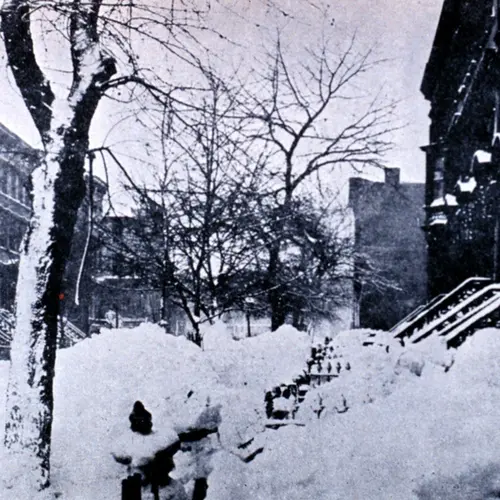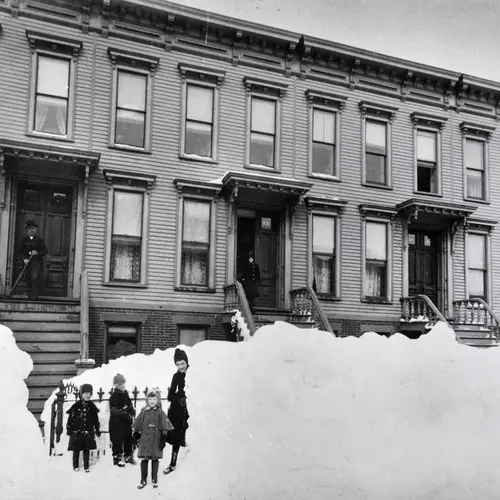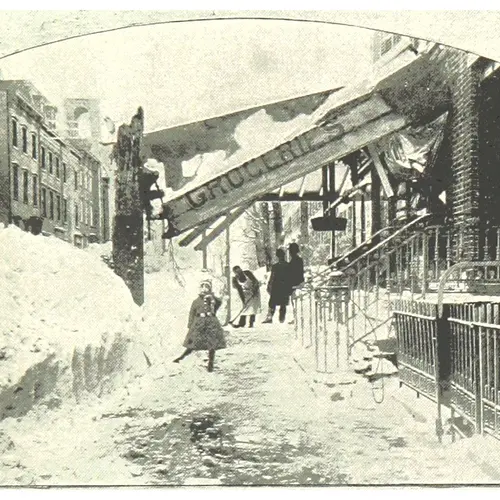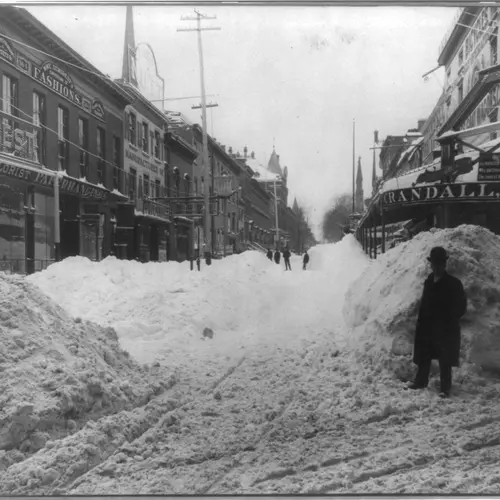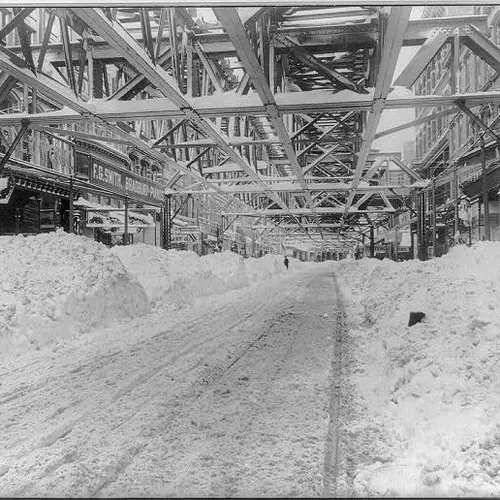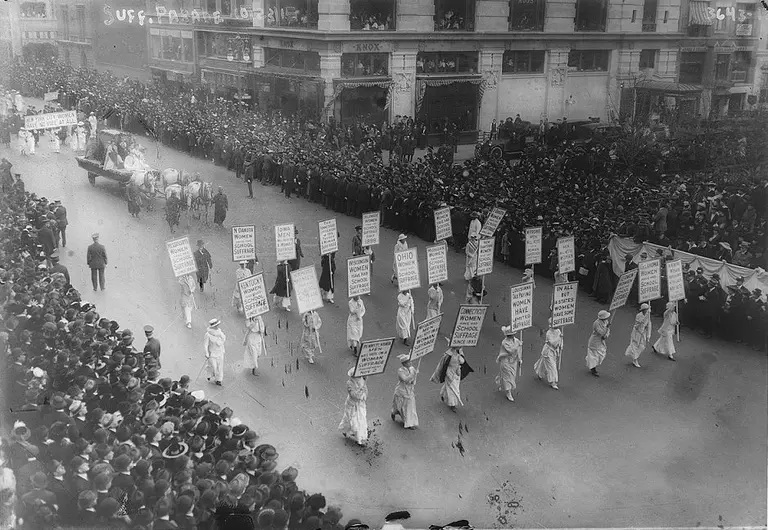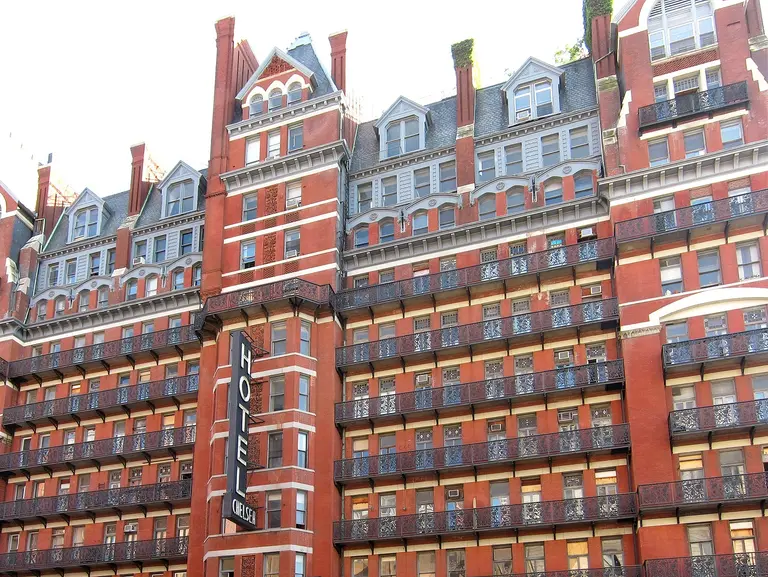The Blizzard of 1888: The biggest snowstorm to ever hit NYC
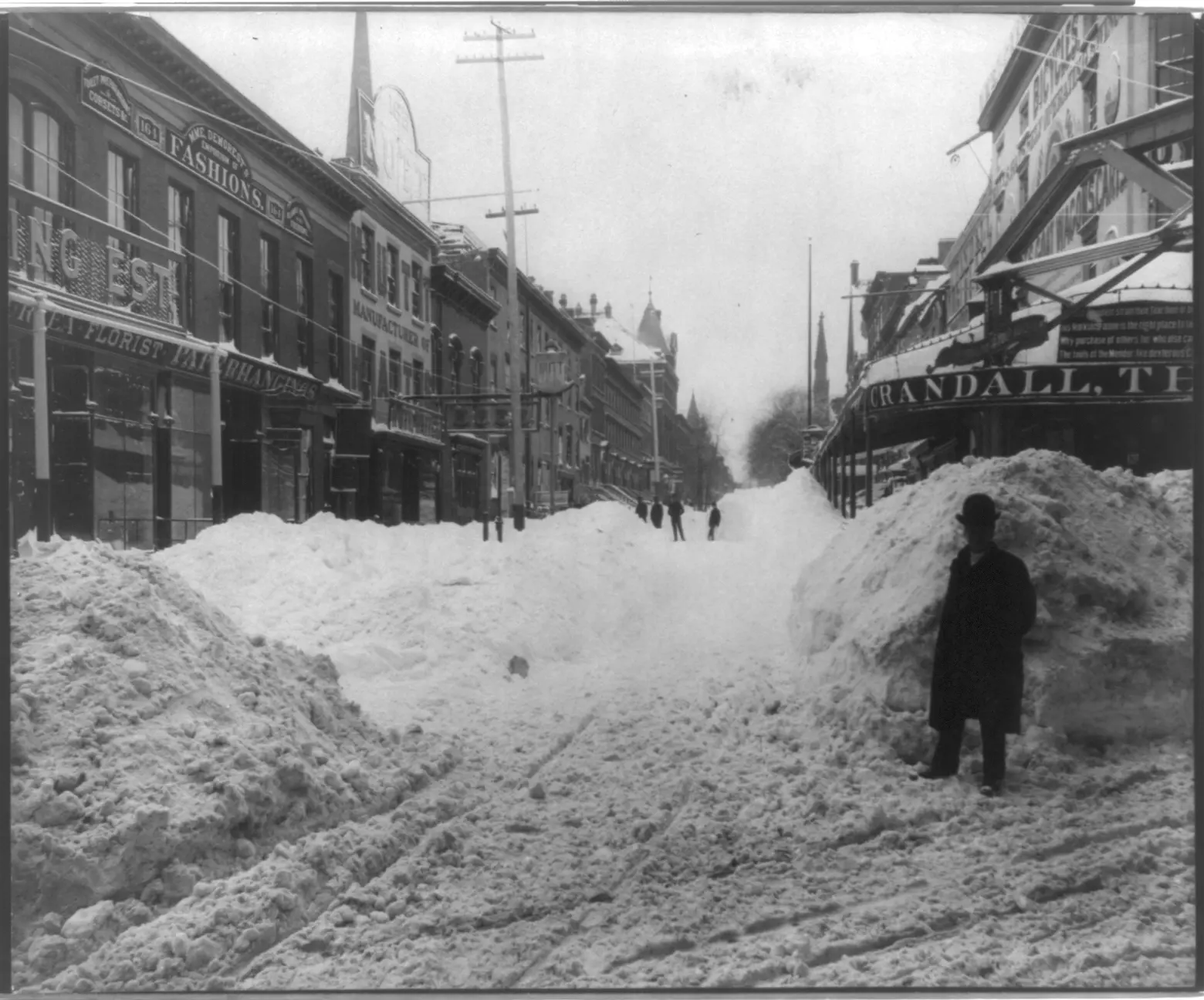
Pierpont Street from Fulton Street in Brooklyn. Photo via Library of Congress
With snow in the forecast for much of the week, we decided to take a look back at the biggest blizzard to ever blanket New York City. On March 12th of 1888, a record-setting 21 inches of snow had been dumped on the city, resulting in snowdrifts of up to 50 feet, $25 million in property damage, and 200 deaths. Known as the “Great Blizzard,” it affected the entire eastern seaboard and is still considered one of the worst snowstorms in American history.
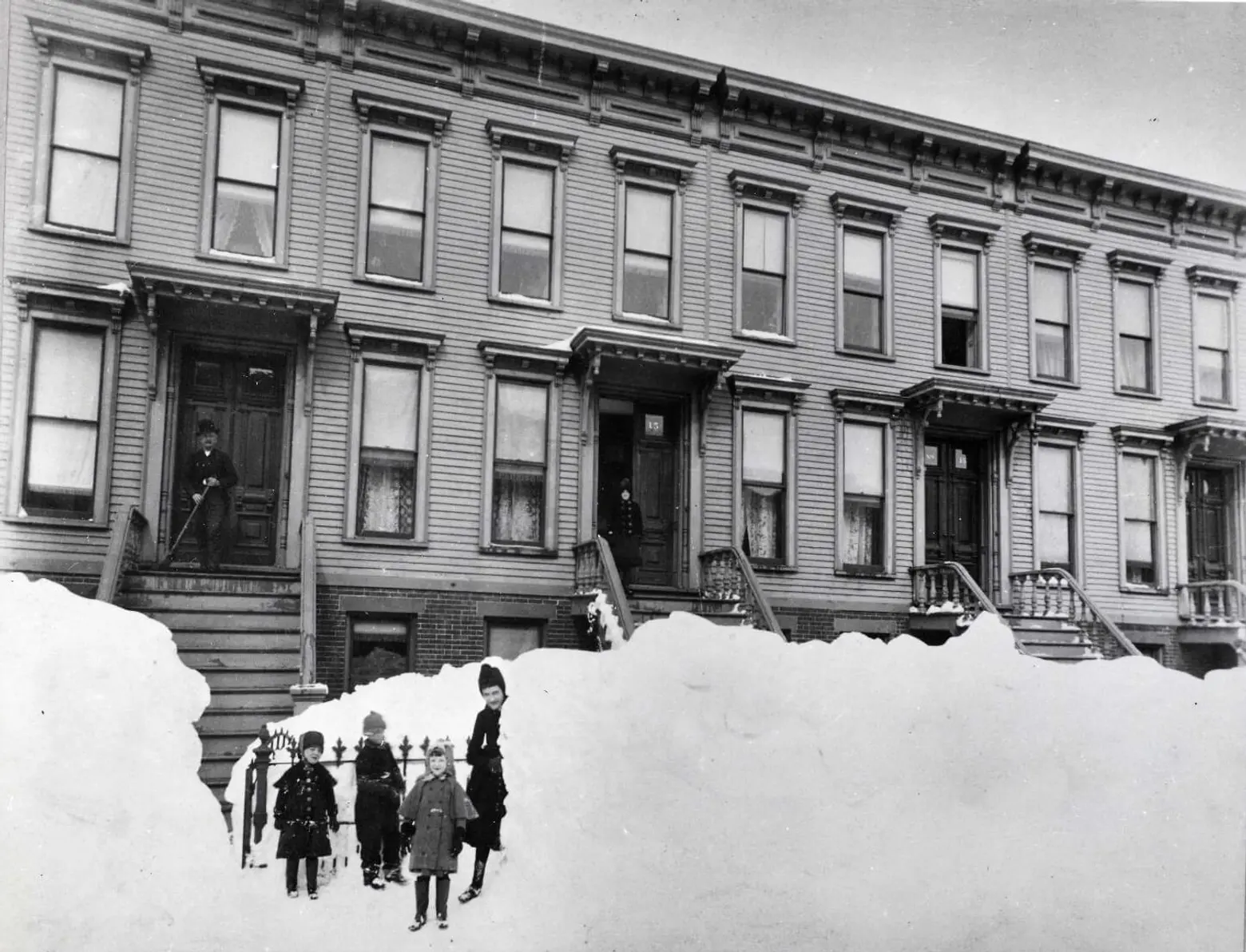
Photo via Brooklyn Museum / Wiki Commons
Originally, the forecast predicted only rain for New York City. According to History.com:
On March 10, temperatures in the Northeast hovered in the mid-50s. But on March 11, cold Arctic air from Canada collided with Gulf air from the south and temperatures plunged. Rain turned to snow and winds reached hurricane-strength levels. By midnight on March 11, gusts were recorded at 85 miles per hour in New York City.
The snow fell for a day-and-half, and on Monday, March 12, New York City had been completely hit by the “White Hurricane.” The storm killed 400 in total, 200 in New York City alone. The high winds caused towering snowdrifts up to 50 feet high, enough to cover two and three-story buildings and create a total “whiteout” in the city. (The country’s record 52-foot-hight snowdrift was found in Gravesend, Brooklyn.) Conditions were so dangerous that Wall Street was forced to close for three days.
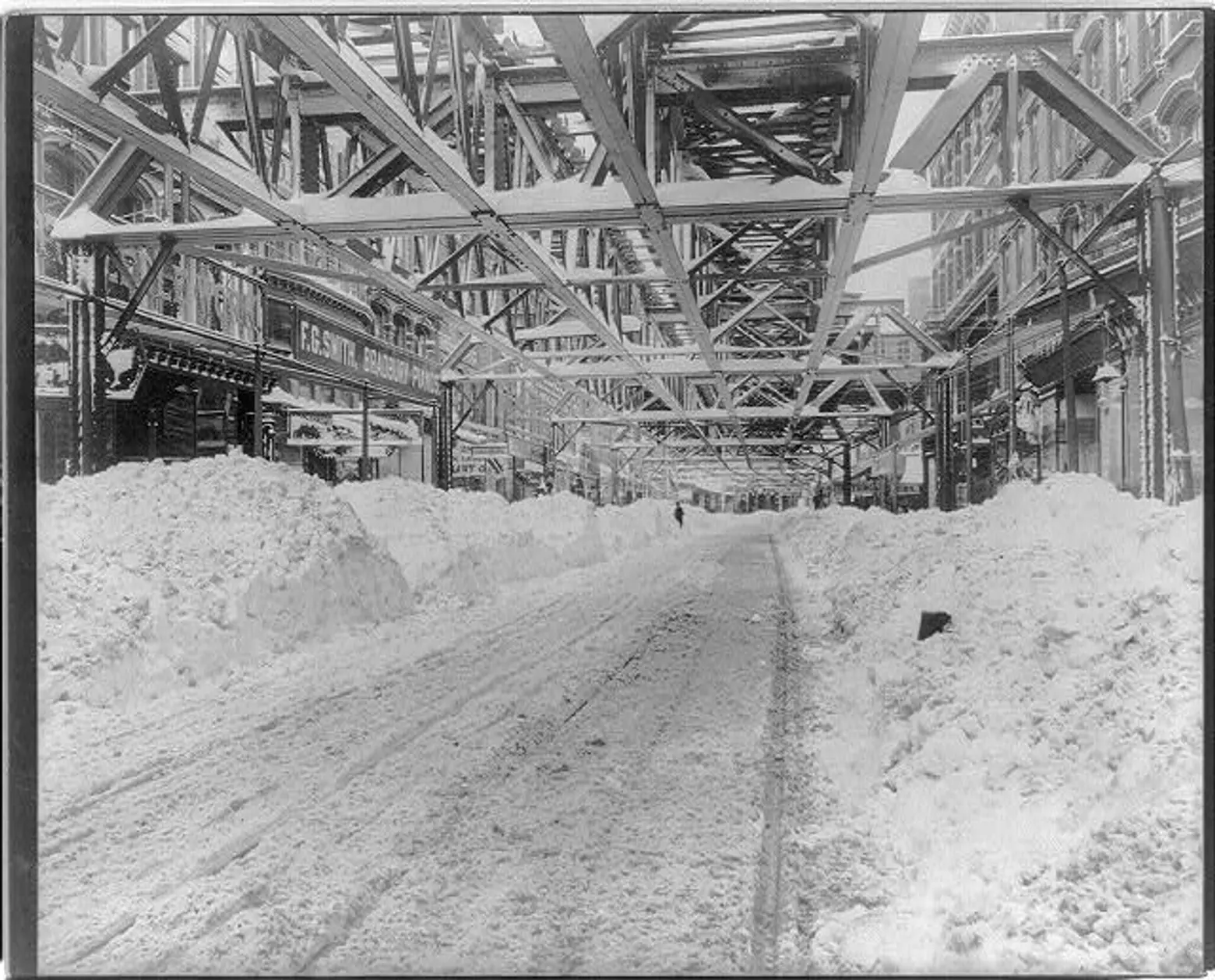 Fulton Street, after plowing, looking towards the ferry. Photo via Library of Congress
Fulton Street, after plowing, looking towards the ferry. Photo via Library of Congress
But the storm is credited for bringing the city into the modern era. In the midst of digging out from under the snow, the danger of such a storm–and the rudimentary process of manual snow removal–became clear. Because the storm was so sudden, families were left without food or fuel. Doctors and patients were unable to connect if they needed to. Freezing conditions and high winds had downed hundreds of overhead telegraph and telephone lines, cutting the snow-bound cities off from the outside world.
Fires were a big threat to the crowded city even on the nicest day. But with the snow, fire engines couldn’t be sent, and more than $25 million in property damage resulted. To clear the snow, much of it was pushed into the rivers, but once the rest began to melt, this resulted in serious flooding, especially in lower-lying Brooklyn, according to Brownstoner.
When it comes to infrastructure, the Great Blizzard of 1888 is credited with forcing the city to bury its utility lines. And since the then-elevated trains were unable to run due to the storm, it gave the city the idea to reexamine plans for an underground train line. As History.com tells us, nearly 15,000 people were stranded on elevated trains when the storm hit, needing to be rescued by ladder in many cases. New York City’s first subway line hit the tracks in 1904, 16 years after the storm.
If you’re thinking we might see a “blizzard” this week, don’t be so sure. The National Weather Service classifies a blizzard as a snowstorm with visibility reduced to .25 miles or less for 3 hours or longer and winds above 35 mph. The five worst blizzards to ever hit NYC are:
March 12, 1888: This aforementioned and totally unexpected two-day blizzard dumped 21 inches on the city and was the worst to strike the city in March.
March 8, 1941: Central Park got about 18 inches of snow.
March 4, 1960: A two-day nor’easter deposited 14.5 inches of snow.
March 5, 1981: A “wintry mix” resulted in 8.6 inches of accumulation, the biggest of several storms that month.
March 13, 1993: The “Storm of the Century” came with 71 mph winds and almsost 11 inches of snow at LaGuardia Airport.
Editor’s Note: This story was originally published in 2017.
